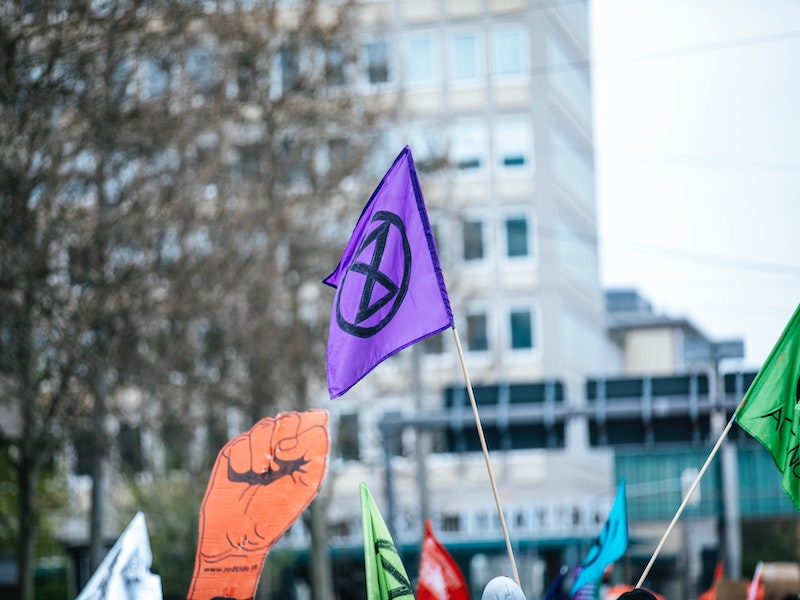Various obstacles work against the environmental movement, but once one falls, they all will
Extinction Rebellion (XR) launched on 31 October 2018 with its ‘Declaration of Rebellion’ outside the Houses of Parliament in London. The following month the group held a day-long demonstration to block five bridges across the River Thames. Thousands turned out in Central London in the most significant act of civil disobedience in London for decades. The movement quickly blossomed, expanding to 84 countries with 1178 local XR groups. That initial momentum has since ground to a halt. The story of XR is the story of the environmental movement at large. It’s never succeeded in becoming a mainstream social movement, which is a little odd when you consider it’s driven to overcome the climate crisis, a problem that will impact each of our lives indiscriminately.
A key problem is that there are so many social issues that public attention rarely focuses on any one issue for all that long — even if the threat is as catastrophic as the climate crisis. The economist Anthony Downs argues interest in social problems goes through five stages he refers to as the ‘issue-attention cycle’. The Black Lives Matter (BLM) movement offers a helpful example of what these five stages look like:
1. The pre-problem stage — for black people and other minority groups, life in the US is defined by systemic racism that bubbles under the surface without capturing wider public attention.
2. Alarmed discovery — on 25 May 2020, a video capturing George Floyd being murdered at the hands of a police officer sparked a wave of global protests and galvanised the BLM movement. In this stage, underlying tensions explode into life, and the movement becomes gripped by a feeling that enough is enough; the problem must and can be solved.
3. A realistic stage — the initial enthusiasm peters out as it dawns on people how difficult it is to solve the problem.
4. A gradual decline in public interest, brought on by discouragement, the emergence of a new issue, boredom, or the practical need to go to work.
5. A post-problem phase — where the problem still exists but receives less attention.
BLM still campaigns to end systemic racism, but direct engagement from the general public has waned since that explosion of racial tension in 2020. The issue-attention cycle has also impacted the environmental movement. The first wave of radical environmentalism lost momentum at the end of the 1970s as the influence of the counterculture waned. The second wave came in the 1980s with the anti-nuclear movement. The 1990s saw a rise in protests against globalisation and the impacts of neoliberalism. It was in the 1990s that global warming started to become public knowledge, and as we entered the 2000s, climate activism became the focus of the environmental movement. But climate activism has been sporadic and has tended to galvanise around campaigns. A specific movement never gained traction. And then the 2008 financial crisis changed everything.
Climate activism was pushed down the agenda, and protests centred on the injustice that banks, whose greed had created the financial collapse, were receiving government bailouts. That injustice culminated in the Occupy movement. It wasn’t until 2018 that a new wave of climate activism spearheaded by XR and the Fridays for Future movement began building momentum once again, only to be undermined by the Covid-19 pandemic that led to global protests against lockdowns and vaccinations.
There’s also the fact the environmental movement isn’t one homogenous group fighting for the same cause; rather, it comprises different groups that vary in size, scope and methods adopted to achieve desired outcomes. Movements within the umbrella tag of environmentalism include nature protection and conservation, climate change, animal rights, anti-nuclear, alternative consumption, environmental justice — the list goes on. That’s not to say there isn’t cross-pollination. An animal rights activist can also be a climate change activist, but different groups have different agendas. When they protest or engage in activities to achieve their agenda, the focus is solely on that agenda. As a consequence, it’s hard to maintain momentum around a specific cause.
There are plenty of green political parties. The German Green Party took 15 per cent of the vote in the 2021 German election, making it the third most popular party in the country. But their success is an exception to the norm. Green parties have generally struggled to gain political influence. In the UK, for example, the Green Party received 2.7 per cent of the votes in the 2019 general election. This may come as a surprise seeing how many people are engaged in or interested in environmentalism. But what has played a part in their failure is that the environmental movement tends to attract a new breed of activists who reject traditional party politics. This new wave of political activism means campaigners tend to be more inclined to mobilise around specific social issues like Black Lives Matter, MeToo, Extinction Rebellion, etc.
On top of this, while environmentalists tend to call for systems change and the end of capitalism, large sections of society want exactly what environmentalists are rejecting. Their message doesn’t lend itself to creating sympathy or broader support. The environmental movement does seek to question inequality and aspires to forge a system based on equality and social justice, but the movement has such strong associations with environmental concerns that this desire tends to get lost in the wind. Rather than support the movement, the poor — and those that still subscribe to a life of material success — tend to have apathy towards it because it is perceived as a threat or risk to their ability to gain (or increase) material wealth.
Perhaps the most debilitating weakness is that, as odd as it sounds, the climate crisis doesn’t feel like a crisis…yet. The painful reality is that when you wake up in the morning, the day will feel just like yesterday, and you can bet tomorrow will feel like today. It hardly feels like we’re on the brink of debilitating changes because the climate changes slowly. This makes calls for social transformation seem radical and extreme because the demand far exceeds the perceived threat.
When you tally up the obstacles working against the environmental movement, it’s little wonder it has struggled to build momentum. And it’s likely to remain on the fringes of society for the foreseeable future. What the movement needs is a crisis that creates a compelling argument for change. One such crisis might be triggered by debilitating droughts that lead to food shortages, which leads to grain-producing countries banning exports which leads to massive price hikes. Shortages could force governments to place constraints on consumption, leading to standards of living falling sharply.
It’s that sort of crisis that will provide the conditions that will allow the environmental movement the opportunity to develop into a mainstream social movement. That’s not to say the movement is wasting its time at present. It’s building crucial foundations for what’s to come. But so long as people’s lives aren’t being directly impacted by the climate crisis, the majority will continue to go about their days as if we’re not hurtling towards one, and any calls for social transformation will fall on deaf ears.



